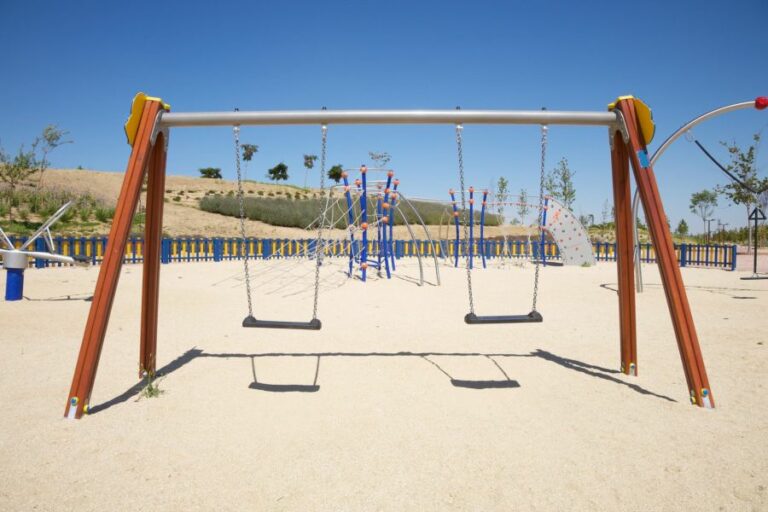Adjacent Area Safety & Protection. 6 Things You Should Know
As we navigate through various safety precautions, it’s crucial to extend our efforts beyond our immediate surroundings. Adjacent area safety and protection should be not only a matter of discussion but also a priority for individuals and organizations alike. We cannot afford to focus solely on our immediate environments while ignoring the perils that may arise from nearby areas.
Adjacent area safety & protection:
Adjacent area safety and protection involves identifying potential hazards, implementing engineering and administrative controls, and ensuring proper use of personal protective equipment (PPE) in residential, commercial, and industrial settings.

Discover the essentials of adjacent area safety & protection! Learn about best practices, innovative solutions, and expert advice to keep your surroundings secure.
Read on to explore in-depth tips and resources that can help you ensure ultimate safety and protection. Don’t miss out on this valuable information dive in now.
Contents
Safety & Protection in Surrounding Areas
• Importance of Safety in Adjacent Areas
Safety and protection in adjacent areas should be given utmost importance, whether it’s in a residential, commercial, or industrial setting. Failure to implement and maintain proper safety measures can lead to accidents, injuries, property damage, or even loss of life.
• Identifying Potential Hazards in Adjacent Areas
One of the first steps in creating a safe environment in adjacent areas is to identify potential hazards. This can include, but is not limited to:
- Falling objects or debris from construction sites
- Vehicles entering and leaving adjacent areas
- Chemical spills or leaks from nearby industries
- Slip and trip hazards due to uneven surfaces, steps or obstacles
- Fire risks from flammable materials stored in the vicinity
- Electrical hazards, such as exposed wires or faulty equipment
Once the potential hazards have been identified, it’s essential to implement appropriate control measures to minimize the risk. This can be done through a combination of engineering controls, administrative controls, and personal protective equipment (PPE).
• Engineering Controls
Engineering controls involve making physical changes to the environment to mitigate potential hazards. Some examples of engineering controls that can be implemented in adjacent areas include:
- Installing safety barriers to prevent unauthorized entry into hazardous zones
- Placing guardrails around elevated areas, such as rooftops, balconies, or mezzanines
- Providing adequate lighting in dark or poorly lit spaces
- Installing drainage systems to prevent accumulation of water or other liquids on surfaces
Moreover, all tools and equipment used in adjacent areas should be regularly inspected and maintained to ensure they are in good working condition.
• Administrative Controls
Administrative controls involve modifying work practices and policies to improve safety in adjacent areas. Examples of administrative controls include:
- Clearly marking paths and traffic routes for pedestrians and vehicles
- Posting safety signage to remind workers and visitors of potential hazards
- Enforcing safe work practices, such as limiting the speed of vehicles in the area
- Designating specific storage areas for hazardous materials
- Conducting regular safety meetings and training to keep workers informed about potential hazards and safe work procedures.
• Personal Protective Equipment (PPE)
Depending on the nature of the work and the potential hazards involved, workers in adjacent areas may be required to wear appropriate PPE. This can include:
- Hard hats for protection against falling objects or debris
- Safety goggles or face shields to protect against hazards related to chemicals or flying particles
- High-visibility clothing or vests to improve visibility in low-light conditions or around moving vehicles
- Slip-resistant footwear for reduced risk of slipping on wet or uneven surfaces
- Gloves and protective clothing for handling hazardous materials
In general, workers should be trained on the proper use, maintenance, and storage of PPE, and it should be inspected regularly to ensure it provides the necessary protection.
• Emergency Preparedness and Response
Adjacent area safety also includes planning for emergencies, such as fires, chemical spills, or other incidents that may require immediate action. Some steps to consider when developing an emergency preparedness and response plan include:
- Developing a clear emergency response plan that outlines roles, responsibilities, and actions for workers and other personnel
- Ensuring that emergency equipment, such as fire extinguishers, spill kits, and first aid kits, are readily available and well-maintained
- Conducting regular emergency drills to ensure that workers are familiar with emergency procedures and can respond quickly and effectively in a real-life situation
Finally, it’s essential to regularly review and update safety policies and procedures to address any changes in the adjacent area’s work environment or identified hazards.
• Conclusion
Adjacent area safety and protection should be a priority for any organization or individual responsible for a particular space.
By identifying potential hazards, implementing engineering and administrative controls, ensuring the proper use of PPE, and planning for emergencies, a safe and secure environment can be created for workers and visitors alike.
For more information and resources on safety and health in the workplace, consider referring to the Occupational Safety and Health Administration (OSHA) guidelines.







